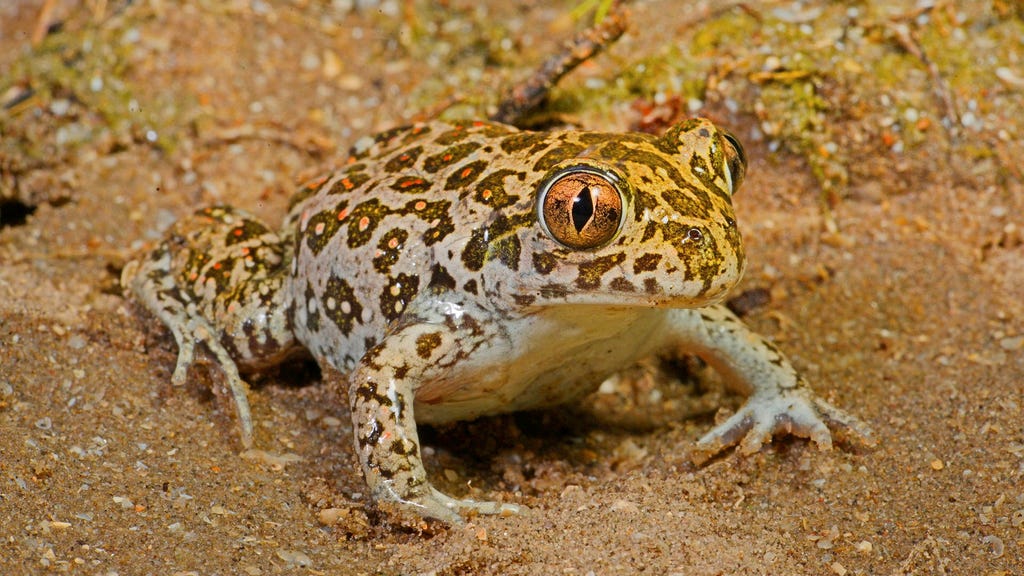The Syrian spadefoot toad, a subspecies of the eastern spadefoot toad, has long been shrouded in uncertainty, its existence in Syria hanging precariously on a single, preserved specimen submitted to the Natural History Museum in London in 1892. This lone piece of evidence sparked a debate about its true origin, fueled by the shifting geopolitical boundaries of the time. What was once considered Syria in 1892 may now fall within the borders of modern-day Israel, a known habitat of the Syrian spadefoot toad, as is neighboring Lebanon. The murky geographical provenance of the original specimen cast doubt on the toad’s presence in Syria, leaving its name seemingly a misnomer.
This ambiguity persisted for over a century, compounded by the Syrian Civil War which erupted in 2011, effectively halting all scientific surveys in the region. Previous expeditions, seeking to confirm the toad’s presence in Syria, had yielded no results, adding to the mystery surrounding this elusive amphibian. The Syrian spadefoot toad, with its camouflage skin perfectly adapted to the marshes it inhabits, proved difficult to locate, even in times of peace. The war further exacerbated the situation, making access to potential habitats impossible and plunging the toad’s existence in Syria deeper into obscurity.
However, a recent breakthrough has breathed new life into the quest for the Syrian spadefoot toad. Shortly after the fall of the regime in Damascus, a report published in the scientific journal Herpetological Conservation and Biology provided compelling evidence of the toad’s presence in Syria, finally justifying its name. Titled "Citizen Science Rediscovering the Syrian Spadefoot Toad in War-Torn Syrian Territories," the report details three separate sightings of the species, a triumph achieved through the innovative use of citizen science. Researchers, leveraging the power of social media, reached out to Syrian wildlife enthusiasts through a dedicated Facebook group, requesting their assistance in locating the elusive amphibian.
This unconventional approach yielded remarkable results. The three sightings, situated approximately 35 kilometers apart and 120 kilometers from the nearest known population in Lebanon, definitively confirmed the existence of the Syrian spadefoot toad within Syria. The discovery was hailed as a beacon of hope for the species, which, along with its close relative the eastern spadefoot toad, is listed as threatened. While currently classified as having “viable” populations, both species have experienced a significant decline in their historical range, attributed largely to the impacts of climate change in the Middle East and Caucasus regions, their primary habitats.
The rediscovery underscores the importance of citizen science, particularly in regions grappling with conflict or limited access. By engaging local communities and harnessing the reach of social media, researchers were able to gather crucial data that would have otherwise been inaccessible. The findings also highlight the resilience of nature, even in the face of prolonged conflict. The Syrian spadefoot toad, despite the ravages of war and the pressures of climate change, continues to persist in its native habitat, a testament to its adaptability and a symbol of hope for the biodiversity of the region.
This resurgence of hope for the Syrian spadefoot toad also brings renewed attention to the conservation challenges it faces. While the recent sightings are encouraging, the species remains vulnerable to the ongoing effects of climate change and habitat loss. Continued monitoring and conservation efforts are crucial to ensure the long-term survival of this elusive amphibian and its close relatives. The Syrian spadefoot toad’s story serves as a powerful reminder of the interconnectedness of human actions, environmental change, and the fate of vulnerable species. Its rediscovery offers not only a scientific victory but also a symbol of resilience and a call to action for continued conservation efforts in a region facing complex challenges.














